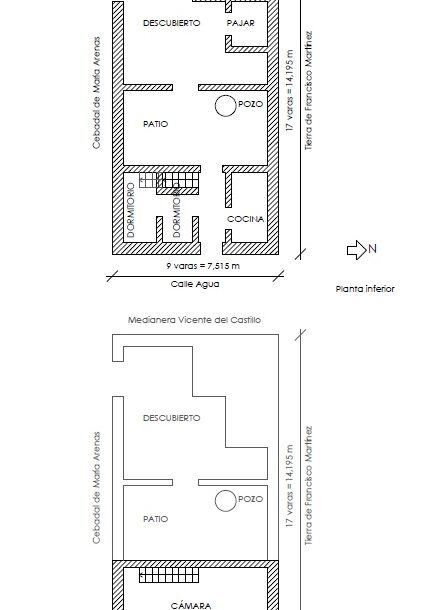
The Spanish aristocracy devoted part of its efforts to establishing an urban structure that would identify it as a nobiliary space and would be another part of its propaganda strategy. The ties that bound these power elites obliged them, to a certain extent, to behave in a supportive manner towards the community as part of their social legitimisation. Within this vision, the nobiliary city can be analysed as a material cultural product and as a structuring element of aristocratic power.
During the 16th century, several nobiliary parties tried to exercise power at Court, and their rivalry can be seen in the different cultural features they applied in the cities under their influence: politics, religion and urban structure. Each side systematically applied common architectural criteria in the cities, but these resulted in very different forms of administration and ideologies.
In towns such as Cuéllar, Benavente or Alba de Tormes, the aristocracy established guidelines linked to medieval traditions, such as the dominance of the castle over the rest of the town. Efforts, therefore, were made to modernise the castle on the inside, even reforming it towards more luxurious standards, but maintaining the sober and powerful image on the outside.
Collection: Images
Project: 3. Rural world and urban world in the formation of the European identity.
Chronology: XVI
Scope: Secondary Education, Baccalaureate, University, Postgraduate
Link: http://www.tiemposmodernos.org/tm3/index.php/tm/article/view/130
Resource type: Image
Format: Map
Source: Alegre, E. (2008). "La configuración de la ciudad nobiliaria en el Renacimiento como proyecto ideológico de una élite de poder", en Tiempos modernos, nº 16, p. 9.
Language: Spanish
Date: 2008
Owner: Roberto José Alcalde López (Modernalia)
Copyright: ©Tiempos Modernos ©Esther Alegre Carvajal
Abstract: Plan of Benavente with the reconstruction of the walled enclosures and its urban structure in the 16th century
Tags





